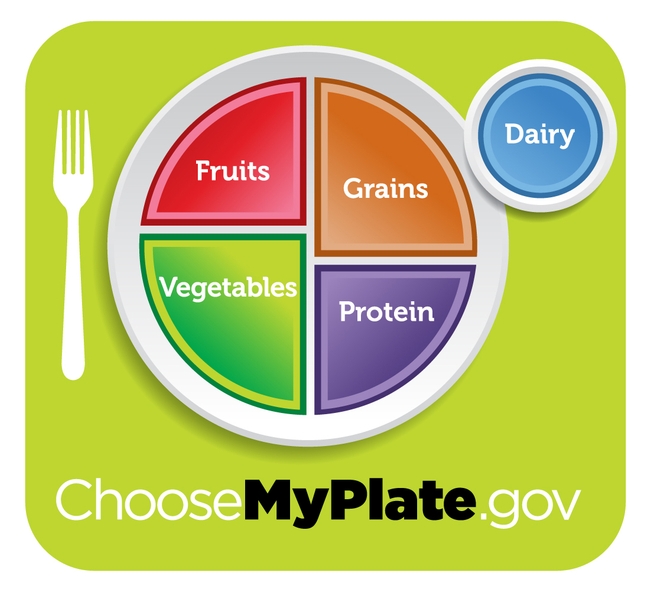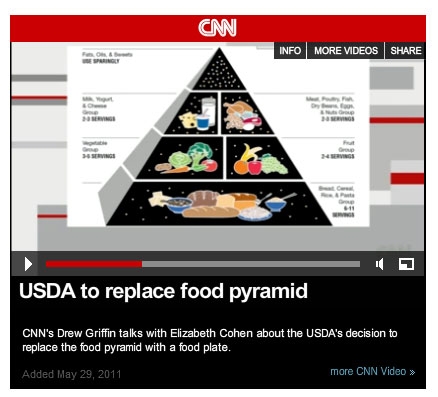From the UC Blogosphere...
UC Berkeley nutritionist welcomes MyPlate
|
|
|
|
The associate director of the UC Berkeley Center for Weight and Health, Gail Woodward-Lopez, said USDA's new food icon, MyPlate, is more in line with current nutrition science, according to The Bay Citizen.
"It has the potential to be more effective," Woodward-Lopez was quoted. "The pyramid involved counting the number of servings for the day. So when do you make that decision? When you go to bed at night?"
She said the plate in consistent with the Center's findings on obesity prevention for children and adults: "Lots of fruits and vegetables, less refined grains, don't overdo the protein."
Something interesting I've noticed about the news coverage of MyPlate - including the Bay Citizen story - is references to the pyramid it replaces. The original Food Guide Pyramid, introduced in 1992, was replaced by MyPyramid 2005. However, some journalists have ignored the six years of MyPyramid, declaring that MyPlate replaces the long-retired hierarchical Food Guide Pyramid.
See the CNN story (image below) for another example of this common misunderstanding.
Long and Gangly
The crane fly is as long-legged and slender as a runway model, but as gangly as a teenager.The insect, from the family...
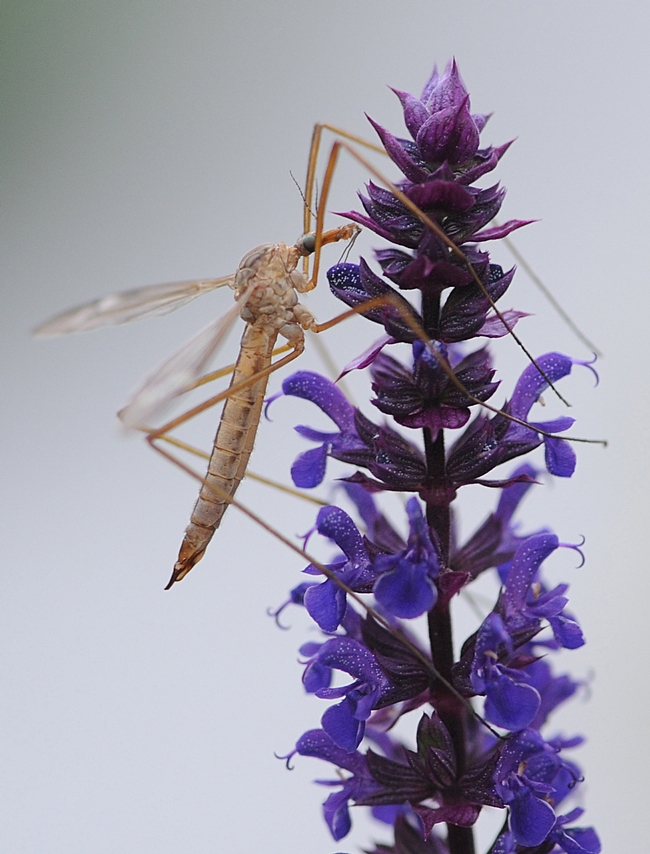
Crane fly resting on salvia. (Photo by Kathy Keatley Garvey)
Cool spring weather slows down crop growth
UC Cooperative Extension farm advisor Manuel Jimenez, a lifelong San Joaquin Valley resident, said he can't recall another spring as cool as 2011's, according to the Porterville Recorder.
“It actually has slowed down everything,” he was quoted in the story. Crops are growing "at a turtle's pace."
Cotton and corn already suffered delays in planting because of wet weather. Backyard gardeners are seeing a slowdown in the development of tomatoes, squash and peppers. But cool springtime weather isn't all bad news.
For crops like blueberries and strawberries, the cooler weather is good. Porterville area strawberry grower Nai Saechao said the cooler weather has allowed for an extended, higher quality crop.
“The plants keep producing when it’s cold,” the grower was quoted.
The story said mild weather is expected to continue in the foreseeable future. Today and Friday temperatures will top out in the mid 70s and over the weekend another low-pressure system will keep temperatures in the low 70s, with a 20 percent chance of rain.
Though warmer days will help most crops, Jimenez said a sudden heat wave is not what farmers have in mind. That would ripen a lot of fruit all at once, flooding the market and bringing down prices.
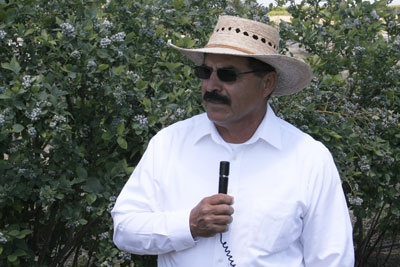
Manuel Jimenez speaks at a recent blueberry field day.
Cute as a June Bug
You never hear anyone say "He's as cute as an earwig." Or, he's as cute as a "lygus bug." No. It's "Cute as a June bug,"...
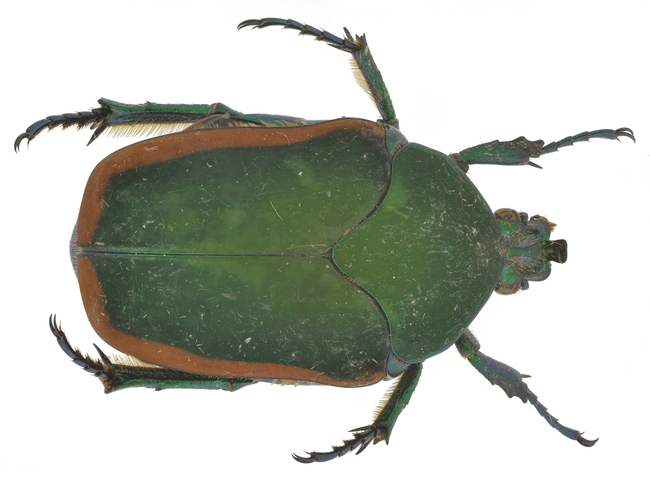
June bug, aka fig beetle (Cotinus mutabilis) at the Bohart Museum of Entomology. (Photo by Andrew Richards)
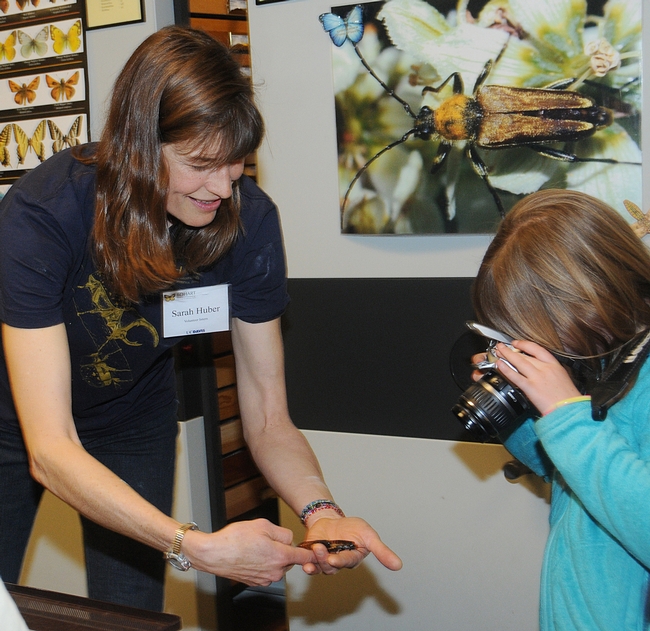
Bohart Museum volunteer Sarah Huber shows a student a Madagascar hissing cockroach. (Photo by Kathy Keatley Garvey)
USDA food pyramid to be retired tomorrow
The USDA will introduce America to a new "food icon" tomorrow during a national online press conference, the agency has announced. The New York Times reported over the weekend that MyPyramid (right) will be replaced by a simple, plate-shaped symbol, cut into four wedges - one for fruit, one vegetables, one whole grains and one protein. A small circle on the side will represent dairy.
The article said the Times sourced its information from "several people who have been briefed on the change." It reported that USDA spent about $2 million to develop and promote the new logo, conduct research and focus groups and create the website.
In its announcement about tomorrow's roll out, USDA said the new food icon will be part of a comprehensive nutrition communication initiative that provides consumers with easy-to-understand recommendations, the new website, plus other tools and resources. Tomorrow's press conference will be live-streamed at http://www.usda.gov/live beginning at 7:30 a.m. Pacific Time. A press kit and other information will be available tomorrow at http://www.cnpp.usda.gov.
Americans have been following a pyramid-shaped eating guide for nearly 20 years. The original Food Guide Pyramid, released in 1992, showed a hierarchy of foods, with those that should make up a greater portion of the diet depicted on a wide base, tapering up to smaller quantities at the top. The pyramid had grains as the foundation, fruits and vegetables making up the next largest section, followed by meats and dairy and, in a tiny section at the top, added fats and sugar.
The pyramid was turned on its side in 2005 when USDA introduced the revised "MyPyramid." Vertical strips represented the different food groups and a stick figure running up the side emphasized the need for exercise.
Look for a summary of the news conference, a link to the new website and a picture of the new USDA icon in the UC Food Blog tomorrow.



